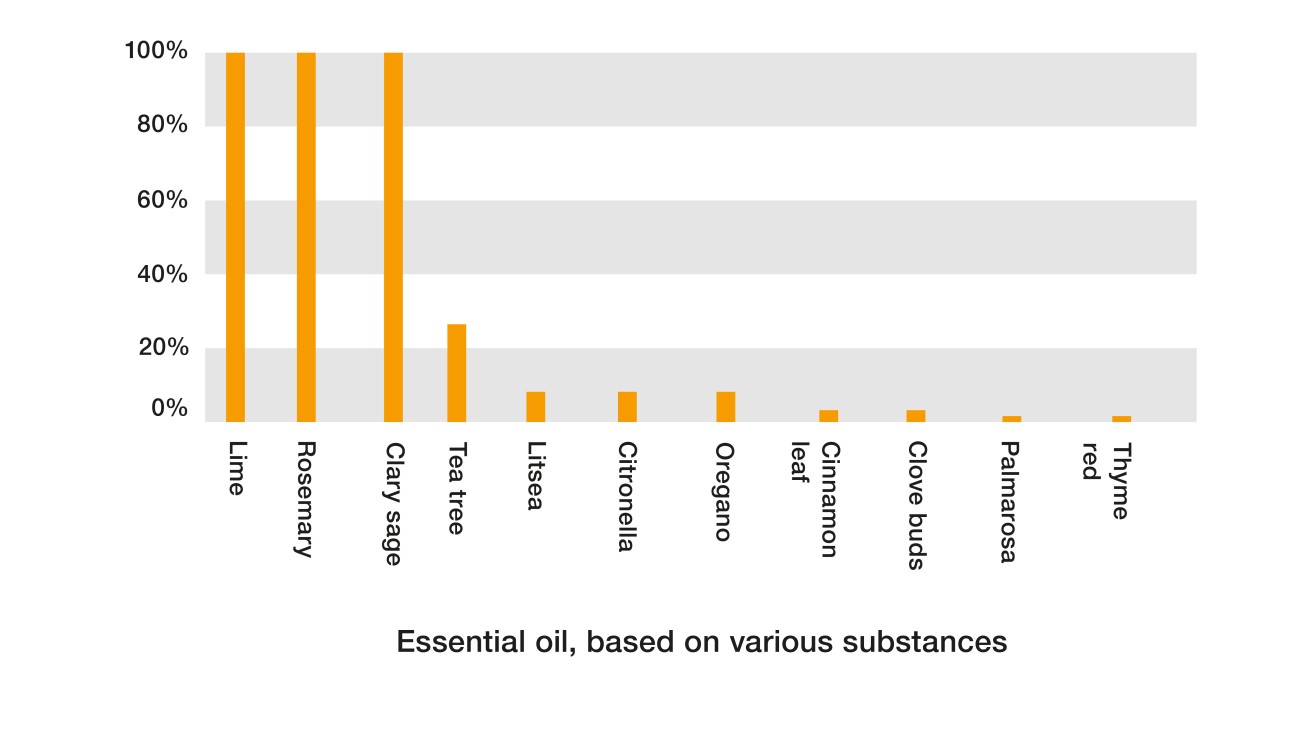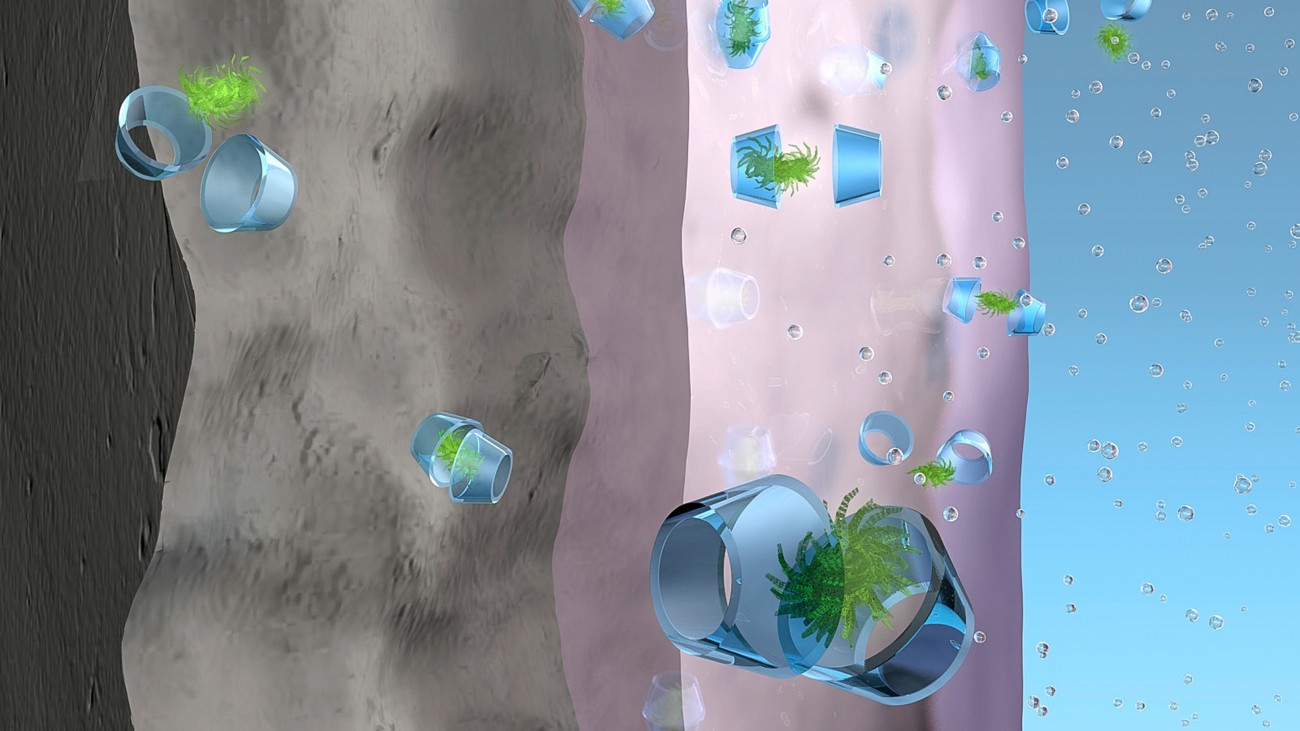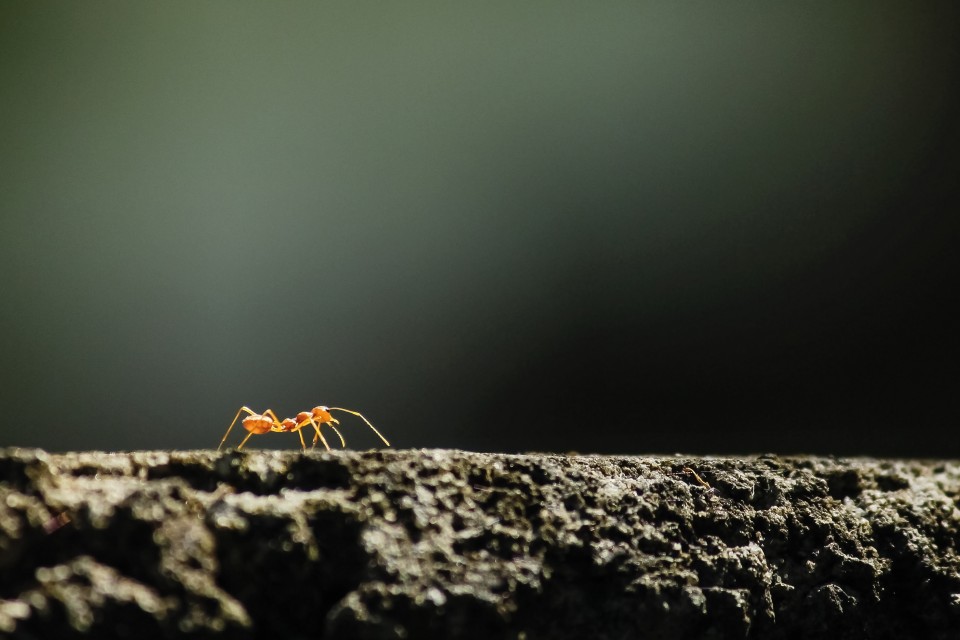
Ants can cause considerable damage
Mar 01, 2019 Read time: approx. MinutesMinute
Repelling pests with natural essential oils
WACKER experts are working on physiologically harmless ways of keeping harmful insects out of houses. Functional coatings containing essential oils simply drive pests away by virtue of their odor. These formulations are stabilized by cyclodextrins which release the ingredients in a controlled manner.
Ants are not only a nuisance in your house, they can also cause considerable damage. Species that destroy wood infest load-bearing wooden parts and insulating materials. These insects particularly like to set up home inside false ceilings and are hard to get rid of.
Property owners are even more worried about termites, especially in the USA, where many houses are made of wood. According to the US Environmental Protection Agency (EPA), property owners spend $2 billion a year trying to undo the destructive work of termites.
“Such damage can remain hidden for years. Mostly, it takes professionals to clearly identify the signs of ant or termite infestation.”
Mark Harrison, global business development manager at WACKER BIOSOLUTIONS in Adrian, USA


Exterminator removing damage caused by termite infestation in a house
Silently in the background
What makes these tiny insects so dangerous is that they work silently in the background over a long period of time. The infested facade looks to be virtually intact from the outside, but it has been hollowed out from the inside. This makes the structure crumbly and promotes ingress of moisture. That in turn boosts rot and fungal growth, eventually compromising the stability of the entire building. Aside from wood, ants and termites will destroy paper, books, insulating materials and even swimming pool linings and filter systems.
Getting rid of an infestation usually entails removing the damaged wood and giving the building a thorough once-over with pesticides. Setting poisonous bait is another way to eliminate insects. A third, and less radical option would naturally be to prevent the insects from establishing a foothold in the house in the first place. This might be achieved by rendering a wooden house unappealing to the pests – possibly with aromatic oils.
“Essential oils are coming to the fore in such application areas, because a number of these volatile natural products have a repellent effect on certain creatures,” says Harrison. Thus, sprigs of lavender have been used since time immemorial to keep moths out of wardrobes. Many chemical compounds that can be isolated from essential oils possess this repellent property.
For several years, research institutes, especially those located in tropical regions, have intensified their studies into whether and how essential oils can provide protection against various insects – not least for the sake of curbing the advance of diseases such as malaria and yellow fever, which are spread by insects. Spiders could be a possible target group for such applications as well, though they generally cause no damage to the house, some species in hotter regions can be poisonous for humans.
Industrial companies such as WACKER are working hard on rendering natural products useful for insect-repellency applications. As their constituents usually have a broad-spectrum effect, they hold out much promise in numerous, highly diverse applications. “The construction industry, too, has woken up to the potential of essential oils,” explains Harrison. “Natural active ingredients could serve as a basis for formulating wall paints and other coatings that repel insects.”
Effective fragrances
Essential oils are obtained from comminuted plant parts. They chiefly consist of readily volatile terpenes, which are attractive for their biological and pharmacological properties, and also serve as fragrances and flavorings. Unlike fatty oils, such as olive and sunflower oil, which chiefly consist of non-volatile fatty acid esters, essential oils evaporate rapidly, generally without leaving behind any greasy stains on paper or fabrics.
Many essential oils and their ingredients are surprisingly highly antimicrobial. Several scientific studies, for example, have shown that thyme oil is highly effective against bacteria and mold. Carnation and cinnamon leaf oil also are fungicidal. Cinnamon bark oil, by contrast, is highly antibacterial. What is more, as far as we know, the microorganisms are not showing signs of developing resistance to essential oils.
“Natural active ingredients could serve as a basis for formulating wall paints or other coatings that repel insects.”
Mark Harrison, Global Business Development Manager, WACKER BIOSOLUTIONS
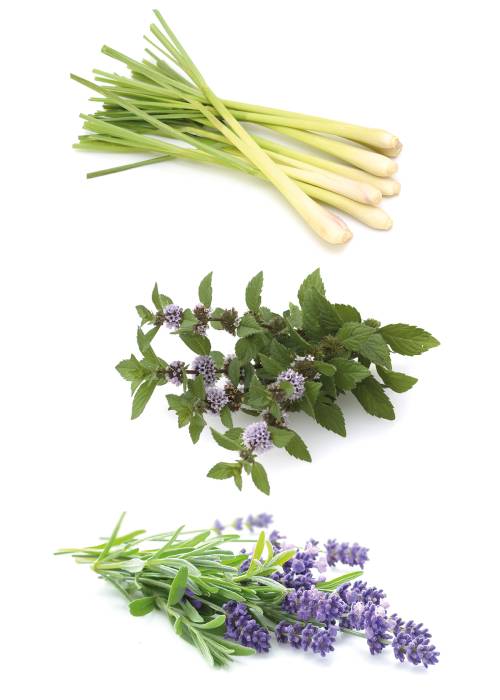
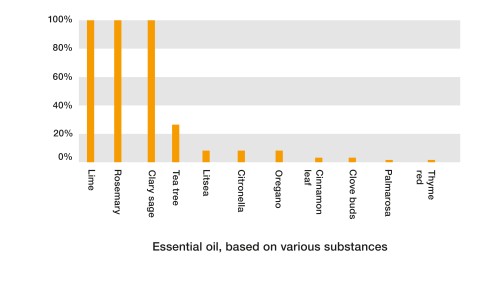
Concentration in spore suspension in essential oil to prevent spore germination by Funghi 40 h incubation time.
Volatile substances
Unfortunately, many essential oils have two major drawbacks. First, they exhibit very high chemical sensitivity – many of their ingredients are destroyed by air and light. Some of them undergo changes when heated together with, or in the presence of, acidic or alkaline media. They rapidly lose their efficacy as a result. “Some of the components wouldn’t even survive being stirred into the plastering mortar or the wall paint,” explains Harrison. Second, essential oils are so volatile that they will completely evaporate from the applied coating or film within a few days.
However, these drawbacks can be canceled out by a molecular trick: cyclodextrins from WACKER can be used to formulate functional coatings that protect the sensitive fragrances against destructive influences. Cyclodextrins are ring-shaped sugar molecules that can encapsulate and then release other molecules. WACKER bio-engineers cyclodextrins from cornstarch and sells them under the CAVAMAX® brand.
This molecular encapsulation artist has a hydrophobic cavity inside it that locks away the fragrances securely, as if they were in a tiny safe. The key to the safe is water molecules. “When moisture acts on this inclusion compound, the substances are released in their original form and are free to do their job,” says Harrison. “Our studies show that this form of release also works from dried coatings.”
“When moisture acts on this inclusion compound, the substances are released in their original form and are free to do their job.”
Mark Harrison
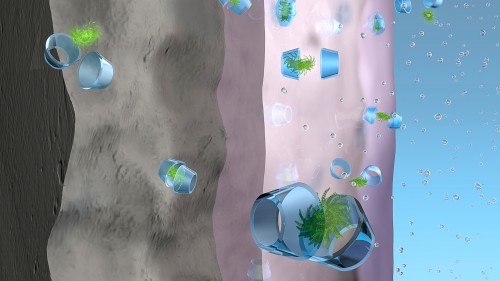
Model showing the mode of action of cyclodextrin-fragrance complexes in wall paint. The ring-shaped sugar molecules (blue) can accommodate fragrances (green) within their cavities. These are released by moisture and emitted in a controlled manner to the environment.
Proof of repellent action
Together with an external partner, Harrison and his team are working on establishing cyclodextrins as a component of functional coatings and thus on rendering them useful to the construction industry. The idea is to incorporate the molecular safes, along with an insect-repelling essential oil, into wall paints that are not exposed to driving rain. Atmospheric moisture then determines how much of the fragrance is emitted to the ambient air. The more water molecules that are present in the atmosphere, the more fragrance is released. The cyclodextrins function like a reservoir, enabling the repellent to combat the pests continuously over a protracted period of time. Tests have confirmed that a commercial emulsion paint to which has been added a 5% complex of cyclodextrin and 0.5% citronella oil obtained from lemongrass, had a repellent effect on ants, for example. The protective and release mechanism works so well that the coatings functionalized with cyclodextrins can release the fragrance for up to three years.
Tackling mold the natural way
In modern wall paints, especially interior paints, the vehicle is usually water, and not an organic solvent. This affords a way of slashing emissions that can harm the environment and damage health. The other side of the coin, however, is that water-borne paints are more susceptible to microbial attack. They offer ideal growth conditions for bacteria and fungi. So that the paint does not spoil before the consumer uses it, manufacturers add microbicides. Nowadays, these are mostly chemicals that kill off bacteria and fungi. The problem here is that these substances are often irritating to human skin and mucous membranes and have a detrimental effect on the environmental. There is therefore a general trend in favor of solutions that are based on natural, less harmful additives – for example, essential oils such as lavender, citronella and rosemary.
Many of these natural products possess antimicrobial properties. However, they are readily volatile, insoluble in water and often chemically unstable. For these reasons, addition of the organic substance to water-borne paints is not straight forward. WACKER has solved this problem by using cyclodextrins. These ring-shaped sugar molecules accommodate the essential oils inside their lipophilic (fat-soluble) cavities, from where they can slowly evaporate and unfold their antimicrobial effect over a protracted period. At the same time, the cyclodextrins boost the solubility of the organic substances because their outer shells are hydrophilic (water-soluble). The experts at WACKER have already created formulations in which the essential oils are encapsulated within the ring-shaped sugar molecules. At the moment, variants with lavender, peppermint and citronella oil are available. These are suitable for water-borne paints.
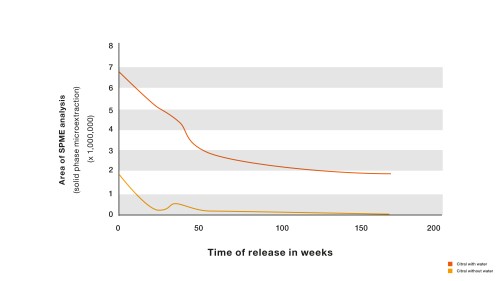
Citral release from paint – Citral is a fragrance and aroma compound that forms the main constituent of lemongrass essential oil. What is more, it is released after more than three years if the wall paint is formulated with citrus oil and cyclodextrins.
Contact
For more information on this topic, please contact:
Mr. Mark Harrison
Global Business Development Manager
WACKER BIOSOLUTIONS
+1 517 264-8719
mark.harrison@wacker.com

